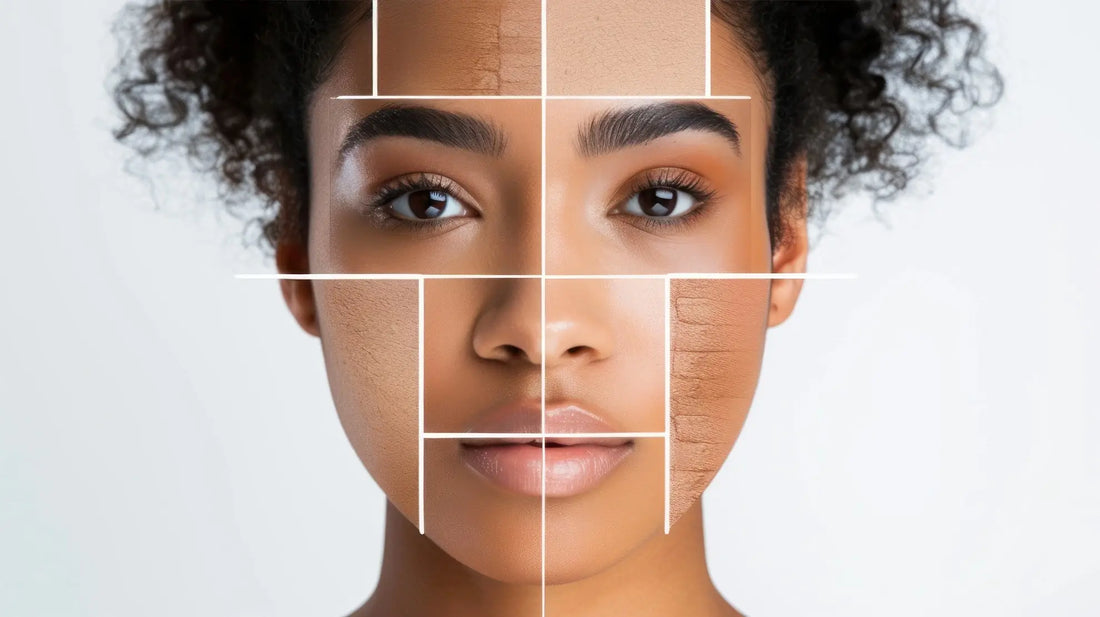
What type of skin do you have?
Knowing your skin type is essential for choosing the right skin care products and maintaining beautiful skin . In fact, each skin type has specific characteristics that influence how it reacts to various cosmetic products . Here is a complete guide to help you identify your skin type , while incorporating advice on appropriate skin care.
1. The different skin types
There are several skin types : normal , dry , combination , oily and sensitive.
- Normal skin: Well balanced, it does not have excess sebum or dehydration . Its skin texture is refined, and there is generally no redness or imperfections .
- Dry skin: Lacking lipids and hydration , dry skin can be prone to tightness and irritation . It can also appear dull and show fine lines and dead cells .
- Oily skin: This skin type produces excess sebum , which can lead to shine on the T-zone (forehead, nose, chin) and enlarged pores . Oily skin is often prone to blemishes such as acne , blackheads and comedones .
- Combination skin: Combining dry and oily areas , it often has sebaceous glands on the T-zone, while being drier on the cheeks . Combination skin can have redness and irregularities .
- Sensitive skin: Reactive to external aggressions , sensitive skin can present redness , irritation , and general discomfort . It requires gentle and soothing care to avoid irritations skin .
2. How to determine your skin type
To identify your skin type , it is recommended to carry out a simple test as part of your facial skincare routine .
- Cleansing: Use a gentle cleansing gel or micellar water to remove makeup from your face in the evening. Avoid cleansers aggressive that can attack your skin .
- Observation: Leave your skin alone for a few hours without applying moisturizer . Observe how your skin behaves.
- Assessment: After a few hours, if your skin remains hydrated and does not have excess oil , you probably have normal skin . If you feel tightness or dryness , you may have dry or dehydrated skin . If the T-zone shines and you notice blemishes , it is a sign of oily skin . If some areas are dry while others shine, you have a combination type . Finally, if redness or irritation appears easily, this could indicate sensitive skin .
3. Choose the right care
Once you have identified your skin type , it is important to choose the right cosmetic treatments .
- For dry skin : Opt for moisturizing creams rich in nourishing active ingredients such as shea butter and vegetable oils . jojoba oil , sweet almond oil and lotions moisturizing . You can also use a hydrating serum and a clay mask to gently purify without drying out .
- For oily skin : Choose mattifying treatments and jellies light or moisturizing creams formulated to regulate sebum production . Use a gentle scrub and foaming cleanser to remove impurities and prevent pore clogging . Aloe vera or clay- based cleansing gel is also a good option.
- For combination skin : Use moisturizing treatments on dry areas while using mattifying products to regulate excess sebum in the T-zone. An eye contour moisturizer and toner soothing may also be beneficial.
- For sensitive skin : Choose hypoallergenic and soothing products , such as day and night creams based on gentle moisturizers , such as thermal water , hydrosol or specific moisturizers for sensitive skin .
Conclusion
Knowing your skin type is not limited to a simple diagnosis, but extends to understanding the specific needs of your skin in order to prevent problems such as dehydration , aging or the appearance of acne . By adapting your skincare routine with appropriate products, whether cleansers , serums or creams, you will help maintain the balance of your hydrolipidic film and preserve the health of your skin. Do not hesitate to consult a dermatologist for personalized advice if you have any doubts about your skin type or the products to use.
